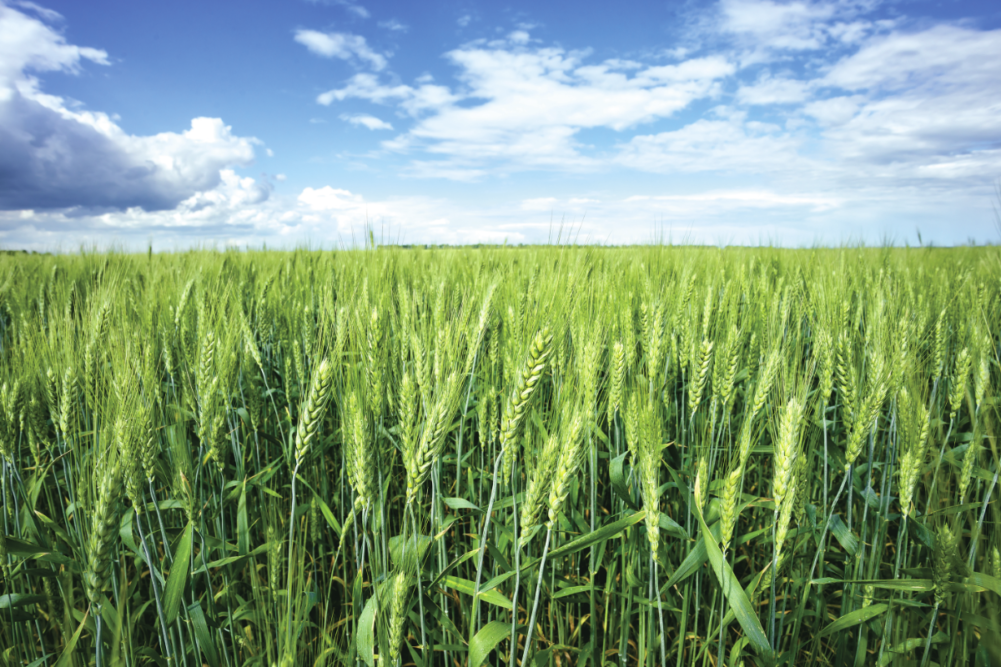The European Union is a major producer and trader of grain, with a large milling sector. Millers are supportive of the Commission’s drive for sustainability, but wary, given uncertainties over how the new targets will translate into legislation. The EU, driven by strong consumer misgivings, has dragged its feet over the adoption of genetically modified crops, even though its large-scale imports of oilseeds, primarily for animal feed, make it a major user of such products.
Total EU production of grain is forecast by the International Grains Council (IGC) at 283.1 million tonnes in 2020-21 for the 27 EU Member States. The equivalent figure for the previous year is 292.7 million.
Wheat production in 2020-21 is put at 128.4 million tonnes, compared with 138.7 million in 2019-20. The maize crop will be 68.9 million tonnes, up from 68.1 million. Barley production in 2020-21 is forecast at 55.2 million tonnes, unchanged from 2019-20. The sorghum crop will fall slightly, to 900,000 tonnes from the previous year’s 1 million.
The EU also will produce 8.8 million tonnes of rye, up from 8.4 million the previous year.
Imports of grain into the EU in 2020-21 are forecast to be 25.8 million tonnes, while exports are put at 36.9 million. Imports of wheat are forecast at 5.7 million tonnes, with exports at 26 million. For maize, imports are seen at 19.2 million tonnes compared with exports of 3.7 million. Barley imports of 500,000 tonnes compare with exports of 6.9 million.
EU rice production in 2020-21 is forecast at an unchanged 1.7 million tonnes, while imports this year also are forecast at 1.7 million tonnes, with exports of 400,000.
The IGC puts the EU’s soybean crop in 2020-21 at 3 million tonnes, with rapeseed output seen at 15.6 million. EU imports of soybeans are predicted at 14.4 million tonnes, while imports of rapeseed are put at 5.9 million.
An attaché report on the sector in the EU and UK, dated April 21 and based on input from Foreign Agricultural Service offices in Europe’s capitals, forecast the total EU 2020-21 grain crop at 304.4 million tonnes.
“If realized, this will be very close to both the 5- and 10-year production averages but belies a reduction in area of around 500,000 hectares and 1 million hectares, respectively, and corresponding increases in average grain yields,” it said. “The total area planted to grain is forecast to decline over 700,000 hectares on MY 2019-20, with all of this reduction in wheat and equating to an 11-million-tonne reduction in wheat production alone.
“Comparatively small fluctuations in the forecast planted areas of the other crops balance each other out and total production of other grains is forecast little changed, albeit reduced production of barley due to a switch to spring varieties in some countries being offset elsewhere, most notably by corn.”
Milling sector

According to the industry’s trade association in the region, European Flour Millers, the milling industry in the EU-27 processes some 45 million tonnes of common wheat and rye, along with 2 million tonnes of oats to produce around 35 million tonnes of flour. More than 3,800 flour mills are located in the EU, most of them small- and medium-sized companies. The industry employs over 45,000 people, providing jobs for an extra 350,000 indirectly at the farm level, the association said.
Laurent Reverdy, secretary general of European Flour Millers, stressed on the EU’s Green Deal and Farm to Fork Strategy that “we are just at the beginning,” in remarks sent to World Grain.
“In terms of the scope and inter-linkage between environmental, agricultural and food policy, the Commission has set out a rather ambitious strategy, but the full implications for the industry will only become clear as each initiative is developed,” he said.
Reverdy pointed out that the details of the planned legislative framework around the sustainability issue are not yet clear, but that there is an aim to include “certification and labeling on the sustainability performance of food products,” which will allow operators to benefit from sustainable practices and progressively raise sustainability standards. Noting that a proposal is due before the end of 2023, he wondered if the Commission would develop its own system of standards and certifications for sustainability.
On the aim to reduce pesticide use, Reverdy explained that millers do believe that modern breeding techniques will play a role in increasing sustainability, providing they are safe for consumers and the environment. They also will accelerate the process of reducing dependency on pesticides, he believes.
The industry is very much on board with the Commission’s aim to promote sustainable diets. Reverdy noted that the consumption of whole grains and grain products in general is too low in Europe and that bread is part of a sustainable diet, with bread superior to alternatives in terms of environmental impact.
Brexit fallout
Talks between the UK, which left the EU on Jan. 31, and the EU are ongoing, with progress glacial, despite a joint commitment to make progress after the British government refused the option of extending the current transition period, due to run out on Dec 31. Under the transition, trade between the UK and EU has continued as though the UK is still a member.
One of many sticking points is the operation of customs controls between Britain and Northern Ireland, both parts of the United Kingdom. Given that the 1998 Good Friday Agreement, which brought peace in Northern Ireland, rules out a hard border between Northern Ireland and the Republic of Ireland to its south, UK Prime Minister Boris Johnson agreed to controls being carried out within the United Kingdom in what is known as the Northern Ireland Protocol of the Withdrawal Agreement.
The issue is a major one for the National Association of British and Irish Millers (nabim), which represents the sector in the UK and the Republic of Ireland. Cross border trade in Ireland is of high importance to the sector.
“Despite the more positive rhetoric about the need for compromise, there still seem to be significant gaps between the sides; there is also a long way to go before uncertainties around the Northern Ireland Protocol are resolved,” Alex Waugh, director general of nabim, said.
Biotechnology policy
An attaché report on biotechnology in the EU, dated March 5, explains that “the European Union’s (EU) complex and lengthy policy framework for biotechnology creates a challenging environment for research and limits access to innovative tools for EU farmers.”
“The EU produces very few genetically engineered (GE) crops but it imports large amounts of GE feed,” it said, highlighting a July 2018 decision by the European Court of justice that made crop varieties developed using “New Breeding Techniques” subject to the same control as genetically modified varieties. “Scientists and professionals in the agriculture and food sectors warned that this judgment could harm research and agriculture in the EU and create trade disruptions. As a result of these strong reactions and upon specific requests of some Member States, the Council of the EU has asked the European Commission to propose options to update the EU policy framework by April 2021.
“Commercial cultivation of GE crops in the EU is limited to 1% of the EU’s total corn area (112,000 hectares of GE corn in Spain and Portugal). The single variety authorized for cultivation is banned in all or parts of 19 Member States (MS). The threat of destruction by activists and difficult marketing conditions also discourage the cultivation of GE crops. The EU does not export any GE products, but it imports more than 30 million tonnes of soybean products, 10 million to 20 million tonnes of corn products, and 2.5 million to 5 million tonnes of rapeseed products per year, mainly for feed.”
The report puts the share of genetically modified products in total imports at 90% to 95% for soybean production, just over 20% for maize and less than 25% for rapeseed.
“The EU’s main suppliers are Brazil, Argentina, and the United States,” the report said. “The United States is a major supplier of soybeans and corn processing by-products to the EU and a relatively minor supplier of soybean meal and corn. The status quo of very limited cultivation of GE plants and large imports of GE products for feed is not expected to change significantly in the medium term.”
Biofuels
The Foreign Agricultural Service explained in a May 28 report that the new Renewable Energy Directive II (RED II), covering the period 2021-2030, agreed upon in June 2018, sets an overall renewable energy target of 32% by 2030, with a 14% target for transport.
“After a dip in 2016, EU bioethanol production recovered,” FAS explained in an annual report on the sector dated July 15, 2019. “This recovery is supported mainly by increased domestic consumption. A limiting factor is the rising prices for corn and wheat, which are deteriorating profit margins. In addition, the domestic ethanol sector will have to compete with expanding imports, mainly from the United States.”






